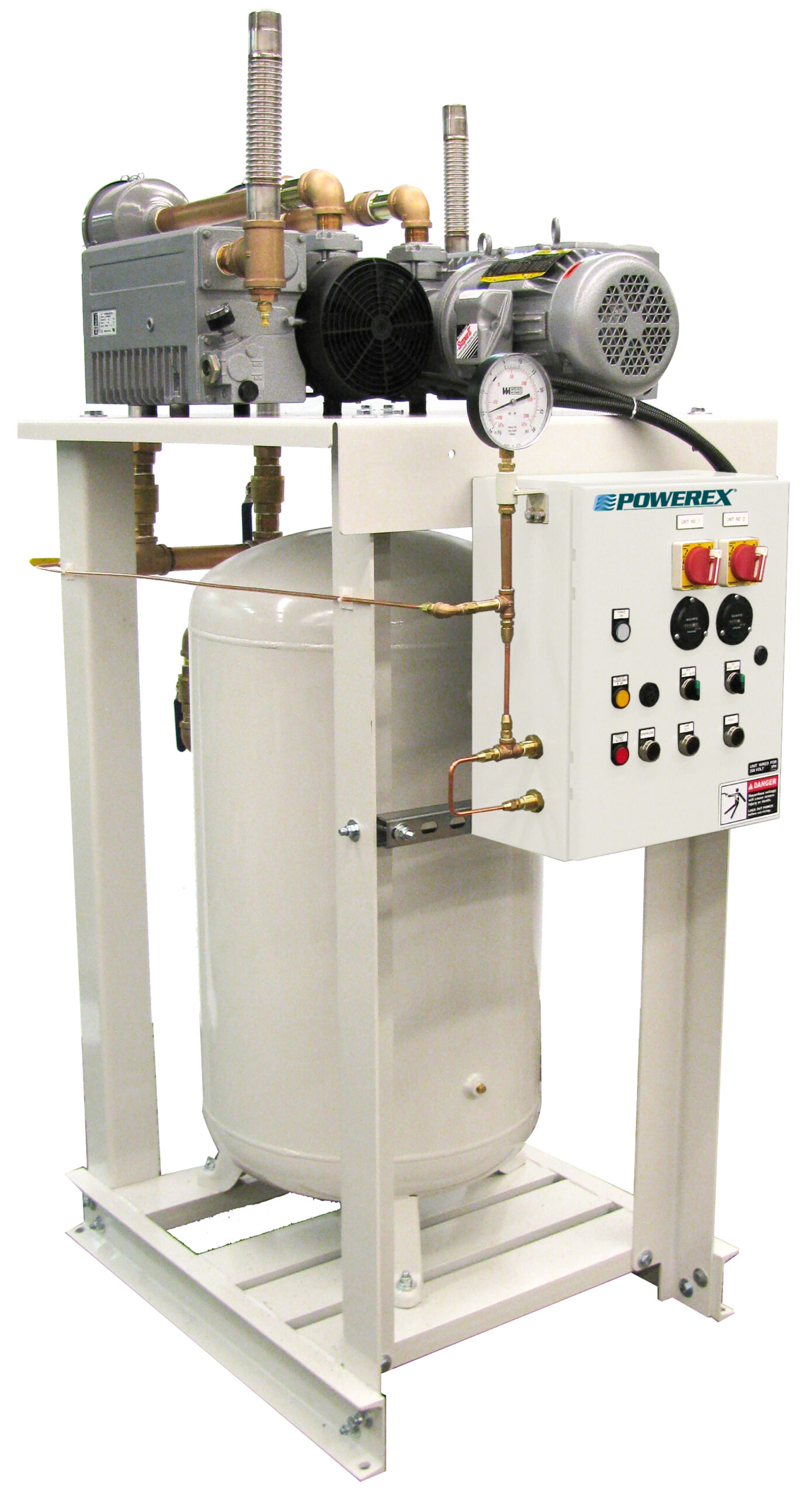2021 Guide To Medical Vacuum Pumps
A medical vacuum pump is an industrial device that removes gases and liquids from enclosed spaces by using vacuum power. The goal for a pump is to create a flow of vacuum power. However, an equally important goal for these types of vacuum pumps is to mitigate any contamination from harming the patient or healthcare staff.
These pumps are used in medical facilities to:
- Drain wounds
- Drain Lungs
- Collect and remove fluids
- Clean tubs
- Assist Patient Breathing
What Makes Them Medical Specific?
Medical vacuum pumps are NFPA99 certified. This means they are reviewed by NFPA for medical-grade functionality and standards. Powerex has been an industry leader in providing medical vacuum pumps since the dawn of the technology.
We say this pretty often about choosing equipment. The saying holds true, though. Choosing the right Medical Vacuum Pump for your application is very important when working with possible contamination exposures.
Types of Medical Vacuum Pumps
While there are many types of vacuum pumps that are used in medical facilities, among the most common are the claw vacuum pumps and oil-less vane pumps. This is due to their ability to prevent contamination.
Claw Vacuum Pump
A claw vacuum pump has two rotors that rotate continuously. These rotors will never meet with each other. The rotation moves gas along from the suction side to the pressure side creating vacuum power. This power is what ultimately compresses the gas. Cool air is brought into the compression housing to reduce the temperature before it leaves the pump.
These compressors are most commonly used due to their oil-free status. This means that contamination is eliminated and patients and medical staff are protected.

Keep Your Medical Claw Pump in Mint Condition
Claw vacuum pumps are easy to maintain. Focus on maintaining these parts:
- Inlet air filters
- Gear oil
Oil-less Vane
Rotary Vane Pumps work by positive displacement. The pump forces a specific amount of gas from the inlet pressure section to its discharge. These pumps have a series of vanes that are mounted to a rotor that turns within a cavity. Centrifugal force extends the vanes from their slots creating compression cells.
These pumps also reduce the risk of contamination due to their oil-less status.

Keep Your Medical Vane Pump in Mint Condition
To keep your medical vane pump in excellent condition, we recommend replacing the following parts regularly to reduce breakdown or inefficiency from wear and tear on the system:
- Vanes
- Inlet filter cartridge
- Discharge washer
- Exhaust filter cartridge
How To Choose The Right Pump For Your Needs
Choosing the right pump comes down to what you will be using the pump for. You won’t use the same pump for patient breathing that you would for cleaning. To choose the correct pump you will need to consider what the effects of contamination would be and what particular hazards are possible.
You will also need to consider if the pump you are using will be efficient for the application it is used for. For example, some pumps are better at running for longer periods of time than others.
Contact Us
If you have more questions on which medical vacuum pump you should be using, please contact us by email or phone. We’d be happy to help you with your selection!